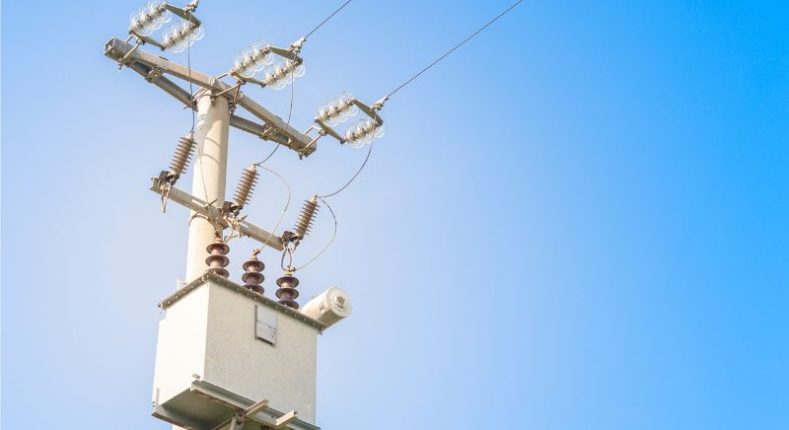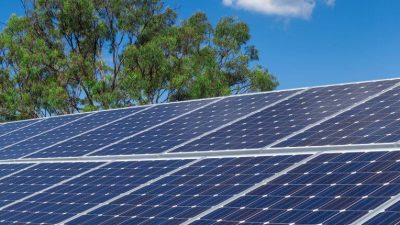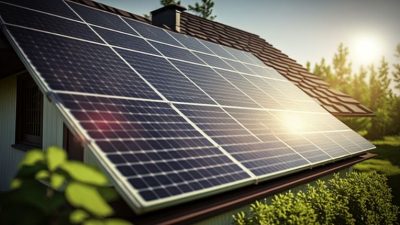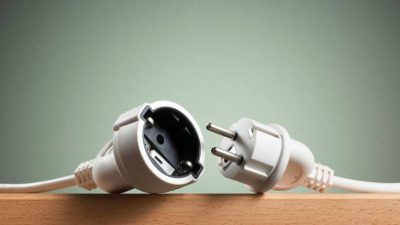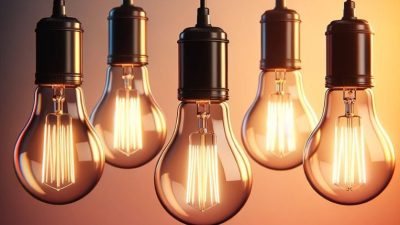Watts are a unit of measurement of power used to quantify the amount of energy that is transferred or transformed in a given period of time.
This unit of measurement is fundamental in our daily lives, as it allows us to measure and control the electrical energy consumption of our household appliances, calculate the sound power of loudspeakers, among other uses.
In this post, we’ll explain everything you need to know about Watts, their history, definition, practical applications, and how to calculate them. Read on to find out more!
What are Watts?
Energy is a fundamental concept in physics and engineering, and Watts are one of the most commonly used units of measurement to quantify it. Watts represent the amount of work done in one second, and are defined as the power required to transfer or transform 1 joule of energy per second.
In our daily lives, Watts or Watts are an essential tool for measuring the electrical energy consumption of our household appliances. By knowing the power in Watts of an appliance, we can calculate how much energy it consumes in a given period of time and, therefore, how much it will cost us in our electricity bill. Watts are also used in other fields, such as in measuring the sound power of loudspeakers or in lighting.
The unit of measurement for Watts or Watts is the Joule per second (J/s), and is defined as the power required to transfer or transform 1 Joule of energy per second.
Watts are related to other energy terms such as volt and ampere.
The volt is the unit of measurement of electric potential, i.e. the force that drives electrons through a conductor.
The ampere, on the other hand, is the unit of measurement for electric current, i.e. the number of electrons flowing through a conductor in a given period of time.
What do the Watts represent?
Watts represent the amount of power being used or generated in a system during a specific period of time. This measure is fundamental in several respects:
Power of electrical devices: In electricity, Watts are used to describe the power consumed by electrical devices. For example, a light bulb may have an output of 60 Watts, which means that it consumes energy at a rate of 60 Joules per second.
Power production capacity: In power generation, Watts indicate the production capacity of a plant or generator. For example, a power plant may have a production capacity of several megawatts (millions of Watts).
Motor and machinery performance: In mechanical engineering, Watts are used to describe the performance of motors and machinery. For example, a motor may have a power output of 100 Watts, indicating the amount of energy it can provide to do a specific job.
Energy efficiency: Watts are important for assessing the energy efficiency of different systems and devices. The lower the power required to perform a given task, the more efficient the system is in terms of energy consumption.
How are they calculated?
To calculate Watts or Watts from other values such as voltage and current, the formula can be used:
Power (W) = Voltage (V) x Current (A)
where:
- Power (W) is the power in Watts or Watts.
- Voltage (V) is the electrical voltage in volts.
- Current (A) is the intensity of electric current in amperes.
For example, if we have an appliance that operates with a voltage of 120 volts and a current of 2 amps, the power in Watts is calculated as follows:
Power (W) = 120 V x 2 A = 240 W
Therefore, the power of the appliance is 240 W.
If the power in Watts is known and the current in amperes is to be calculated, the formula can be used:
Current (A) = Power (W) / Voltage (V)
For example, if we have an appliance with a power of 600 W and a voltage of 120 V, the current in amperes is calculated as follows:
Current (A) = 600 W / 120 V = 5 A
Therefore, the current of the appliance is 5 A.
You can also use the formula Current (A) = Power (W) / Voltage (V) to calculate the current in amperes from the power and voltage. Knowing these formulas, we can calculate the power of electrical appliances and control the consumption of electrical energy in our home.
How does the Watt relate to electricity?
If you want to deepen your knowledge of Watts, you should know that in the case of electricity, a Watt is defined as the power generated by the difference between an electric current of 1 ampere (1VA) and 1 volt.
Therefore, low-power electrical devices can be defined in terms of watts, while those with higher electrical power are defined in terms of kilowatts (kW), equivalent to 1,000 watts, or megawatts (MW), equivalent to one million watts. The idea is similar to grams, kilograms or tonnes.
It is common to confuse Watts with Amps when you want to know how much an electrical appliance consumes. However, they are not the same. While in some devices the values may be the same (as in an incandescent bulb), in others they may differ considerably (as in computer equipment).
The power in Watts is the real power consumed by the equipment, which you must take into account when choosing the contracted power and avoid the Power Control Switch (P.C.B.) from operating. On the other hand, the Amps show the “apparent power” and are mainly used to size the cables correctly and avoid short circuits.
Did you know that part of this is also reflected in your electricity bill? It is common to confuse the kW (kilowatts) of installed contracted power with the kWh (kilowatt-hours) of energy consumed. The former have a fixed cost, while the latter have a variable cost depending on your consumption. The important thing is to differentiate between them and know what you are paying for each one.
Practical applications of the use of watts in everyday life
Below are some examples of how Watts or Watts are used in different practical applications:
Measuring the electrical consumption of electrical appliances: Watts are used to measure the amount of electrical energy consumed by electrical appliances. By knowing the power in Watts of an appliance, it is possible to calculate how much energy it consumes in a given period of time and, therefore, how much it will cost us in our electricity bill. For example, a washing machine may have a power of 2,000 W, while a television may have a power of 100 W.
Speaker power: Watts are also used to measure the sound power of speakers. The power in Watts tells us the amount of energy the speaker is capable of producing. The higher the wattage, the more volume the speaker can produce. For example, a party speaker may have a power rating of 500 W, while a home speaker may have a power rating of 50 W.
Lighting: Watts are used to measure the amount of energy consumed by lamps and bulbs. By knowing the wattage of a lamp, you can calculate how much energy it consumes in a given period of time and, therefore, how much it will cost you on your electricity bill. For example, an LED bulb may have a wattage of 10 W, while an incandescent bulb may have a wattage of 60 W.
Sports: Watts are also used in sports, especially in cycling and exercise bike training. The power in Watts indicates the amount of energy the cyclist is producing when pedalling. The higher the power in Watts, the higher the intensity of the training.
Key questions revealed about the Watts
What is a Watt? A Watt is a unit of power measurement used to quantify the amount of energy that is transferred or transformed in a given period of time.
How are Watts or Watts calculated? To calculate Watts from other values such as voltage and current, the formula can be used: Power (W) = Voltage (V) x Current (A)
What are Watts or Watts for? Watts are an essential tool for measuring the electrical energy consumption of household appliances, calculating the sound power of loudspeakers, assessing the efficiency and generating capacity of renewable energy sources, among other uses.
What is the difference between Watts and Amps? Watts or Watts are a unit of measurement for power, while Amps are a unit of measurement for electrical current. Watts are the actual power consumed by the equipment, while Amps show the “apparent power” and are mainly used for correct sizing of cables to avoid short circuits.
How does the Watt relate to electricity? In the case of electricity, a Watt is defined as the power generated by the difference between an electric current of 1 ampere (1VA) and 1 volt.
How do Watts relate to renewable energy sources? Watts are a key unit of measurement for assessing the efficiency and generating capacity of renewable energy sources, such as solar and wind power.
How can I save on my electricity bill by using Watts? By knowing the wattage of your appliances, you can calculate how much energy they consume in a given period of time and therefore how much it will cost you on your electricity bill. In addition, by using renewable energy sources, such as solar energy, you can reduce your electricity consumption and save on your electricity bill.
How can I calculate the power in Watts of my appliances? To calculate the power in Watts of your appliances, you can use the formula: Power (W) = Voltage (V) x Current (A). You can also consult the energy label of your appliances, where the power in Watts is indicated.
In conclusion, Watts or Watts are a fundamental unit of measurement in our daily lives, as they allow us to measure and control the electrical energy consumption of our household appliances, calculate the sound power of loudspeakers, among other uses.
They are also a key tool in the energy transition towards renewable sources, such as solar and wind energy.
If you want to find out more about how you can take advantage of solar energy to reduce your electricity consumption and save on your electricity bill, do not hesitate to contact Solarmente. Our experts will advise you on the best solution for your needs and help you take the first step towards a more sustainable future. Ask for more information right now and discover all that solar energy can do for you!

